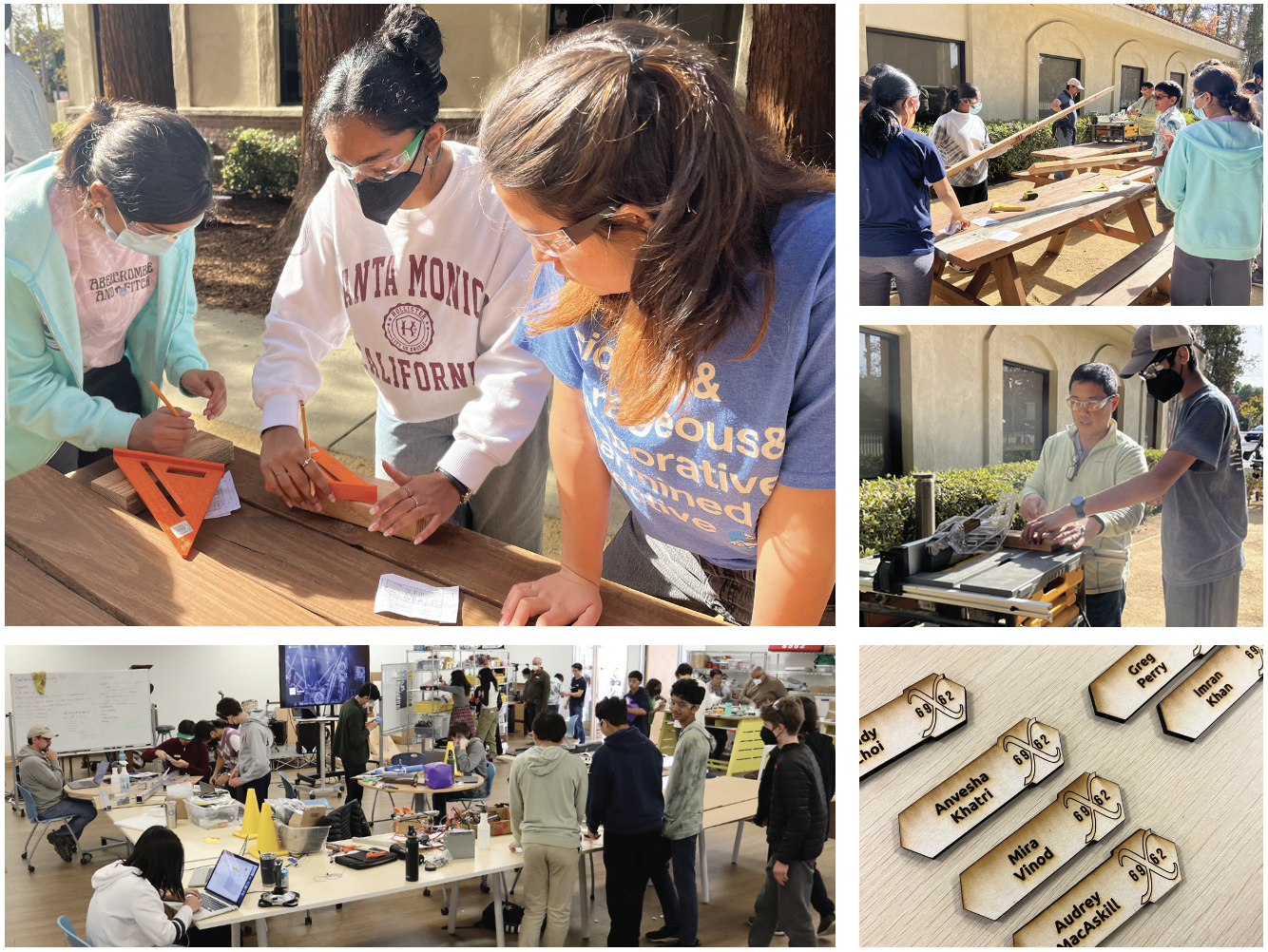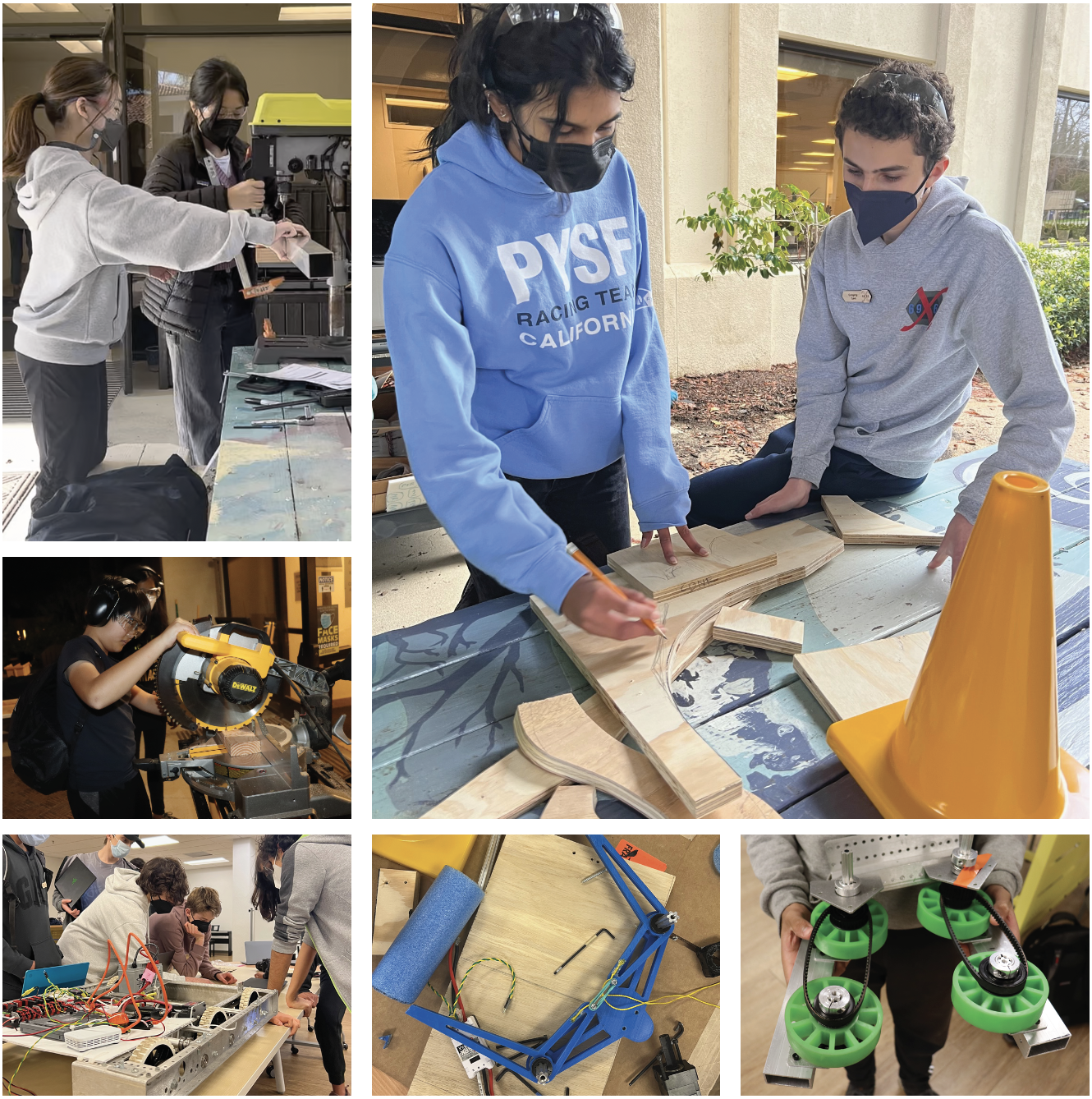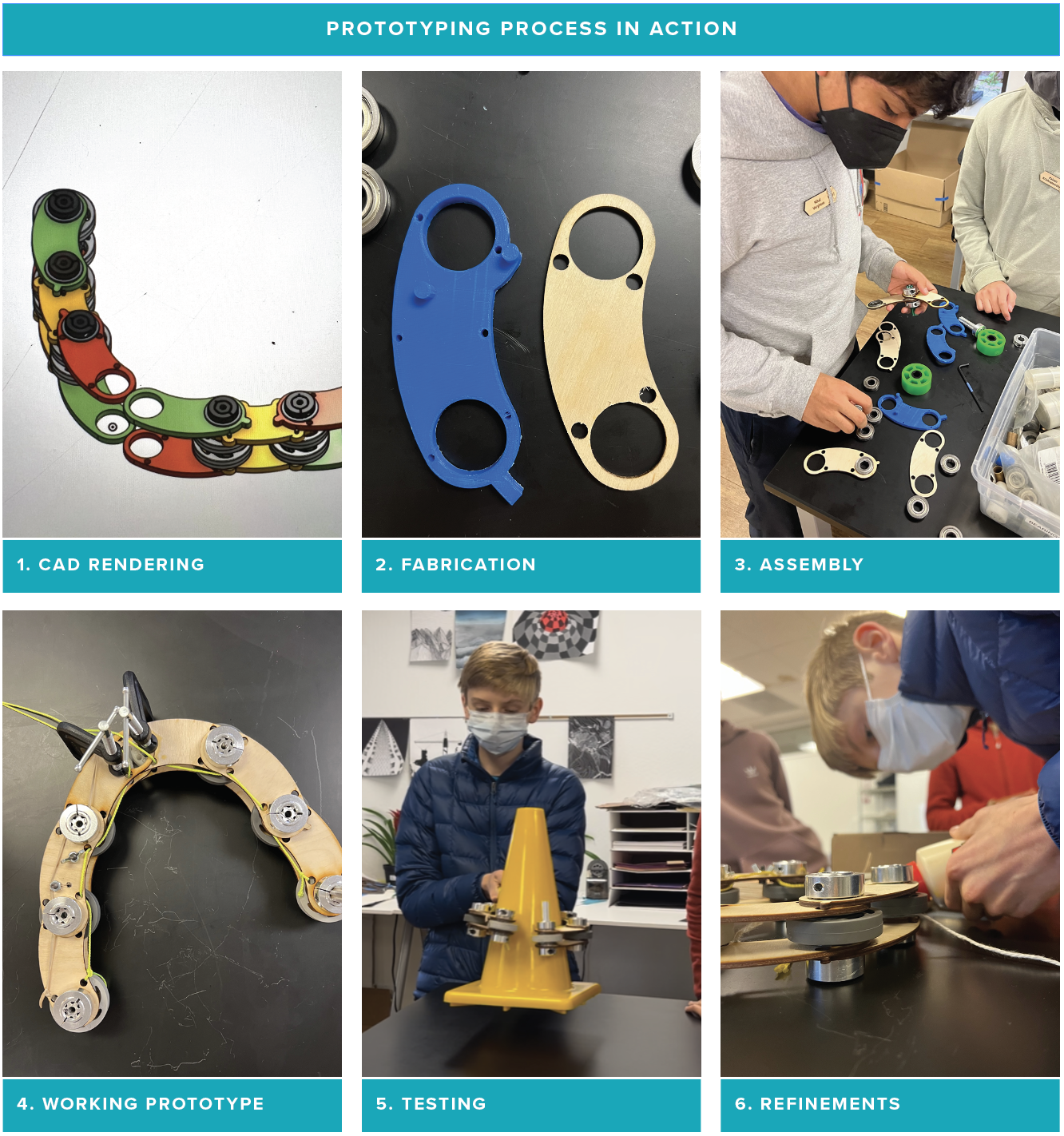Behind the Scenes with RobotX
A Three-Part Series, part 1 of 3
As we enter 2023, we’re proud to announce the kickoff of our Robotics team 6962, RobotX. With a goal of bridging the gap between engineering, design thinking, business, and leadership skills, it’s no surprise that robotics is one of, if not the, most popular after-school team at Khan Lab School. Seventy students from grades 7-12 join together on Tuesday, Wednesday, and Thursday after school, with a full day of prototyping on Saturdays. A handful of parents volunteer to be mentors, which provides critical guidance from professionals in various fields. With membership at an all-time high, we’re optimistic that this year will be our most productive one yet!
KLS_RobotX_2023_Timelapse from Khan Lab School on Vimeo.
Kickoff began on Saturday, January 7th with a livestream announcement of this year’s game challenge by FIRST Robotics Competition (FRC). The co-captains, Megan Chien and Amartya Iyer, split the team into groups and brainstorming ensued. Despite it being a highly competitive competition, the objective isn't to win—no matter how great that would be. Instead, the goal is to teach teamwork, design thinking, time management, resource management, and leadership. The focus is to create a unified team that works well together, not just one that succeeds while standing on the back of other students. RobotX as a whole decides what to build and which direction to go in.

Chi-Ray Chien, Head of Operations and Technology at KLS and Lead Mentor for robotics, explains his process for the team leadership: “In an extension of our motto, “Everyone’s a student, everyone’s a teacher”, we’ve set up the RobotX leadership structure slightly differently than most teams. Our Team Captains and the majority of team leads are sophomores and juniors. Seniors, having already been on the team for as many as five seasons, serve as Student Mentors, practicing the transition between doers to guides. This gives students the opportunity to experience an even broader range of soft-skills (including mentoring and teaching) while having the benefit to the team that the leadership isn’t completely lost each year to graduation. By the time students are applying for colleges in the fall of senior year, they have significant leadership experience to write about from the previous year or two”.
Since RobotX is open to all of our Upper School students, we have 7th and 8th graders who will have up to two more years in the program than on other teams. By the time the typical sophomore applies to join the leadership team, they’ve been part of RobotX for 3 years – and have the equivalent tenure to a senior on another team. While the younger students may be less experienced, we work to further embrace another of KLS’s values — mixed-age learning. Students of all grades are treated as peers, including older students sometimes learning from younger ones as they work alongside each other.

This effort was best represented at meetings during the second and third weeks of the season. The student led-groups came together to present design concepts they’d been working on since launch day. Together they discussed the best features and possible challenges of each other in order to ensure that the concepts and features chosen are selected through a collective effort. The top concerns were stability, speed, and grip precision. When the collective decides as a whole, no one student feels left out or underappreciated. Amartya, one of our Team Captains, likens their decision-making process to flower petals: “sometimes they fall, but those fallen petals seed new ideas and new flowers.” Each idea is developed thoroughly, and though some may not be chosen in the end, students always gain knowledge and inspiration for the next idea. Everyone is making the final decisions together, allowing the finished product to be something that everyone can feel proud of.

Additionally, FRC provides an ideal opportunity for project-based learning. It’s a massive engineering challenge that requires using all the tools in their toolbox, and even using some tools that exist, but that they don’t yet know how to use. By having guidance, support, resources, and equipment onsite, our students are able to take their concepts from idea to execution. Prototyping provides a critical learning tool and can be applied to a broad range of problem-solving challenges. As the students’ design process progresses from brainstorming to sketches to CAD to fabrication, iteration of prototypes becomes essential to progress. Low-resolution prototypes made of cardboard, masking tape, popsicle sticks, and yarn are helpful to illustrate a concept in physical space to teammates, however, as the design is refined, higher-resolution prototypes will be necessary. With each iteration, something new must be learned for the design process to move forward. Perhaps a key feature will be revealed, a major conceptual flaw uncovered, or an integration challenge discovered.
Our students are in the process of narrowing in on a handful of successful prototypes that will be incorporated into the robot they build for the competition. Progress happens quickly and is being documented weekly on social media. Follow along on Instagram @KhanLabSchool and @frcteam6962.
